Level is one of the four thermal parameters (temperature, pressure, flow, and liquid level) that have existed since the age of steam. After the Second World War in the 20th century, with the economic recovery and development, electric power, metallurgy, chemical industry, petrochemical, mining, and building materials industries have developed rapidly, and the degree of automation has also increased. Among the above industrial process controls, the main detection parameters are still four major Parameters, of course, are richer in content. The liquid level also measures the water level from the early stage, develops to the liquid level of various liquids such as: acid, alkali, chemical liquid, various oils, and extends to the interface of incompatible liquids such as: oil-water interface, solid state in water Sediment interface (sludge interface), as well as bulk solids such as: coal, ore, sand, cement, cereals and so on. English is still Level to cover the above measurement content. It is obviously wrong for Chinese to still use the liquid level, so in recent years, gradually use the material level as the Chinese name of such parameters, the specific definition should be: the position of the interface of different phases or non-mixed materials is called the level. According to the different phase materials, they can be subdivided into: liquid level (gas-liquid interface position), material level (gas-solid interface position), liquid-liquid interface position, and liquid-solid interface position.
1 Status of Level Meter Technology
The level is the simplest parameter in the process parameters. With a simple tool (gauge), the level value can be known even by visual inspection. Until the 1950s, the main method was to measure the liquid level. The main method was to use mechanical floats, buoyancy and sub-forces, with the pointer to indicate the liquid level, or perform bit control. The other is the glass plate (tube) level meter used for visual inspection, speculum, and so on, strictly speaking, it can not be counted as an instrument, but is an accessory of the equipment. Historically, there have been seven to eighty years of level instrumentation companies in the international arena, and these early days have also produced these now seemingly simple products.
Since the 1950s, the development of electrical measurement technology has promoted the development of electrical level gauges. In addition to simple electrode-type liquid level controllers, the first to be applied is a capacitive level controller and a continuous capacitive (liquid) level meter developed on this basis. Mechanical level gauges, such as floats, are also attached to electrical devices, enabled to give electrical control signals or remotely communicate measured level signals with electrical signals. Electric pressure (differential pressure) transmitters are also widely used to measure liquid level, making liquid level measuring instruments evolve from purely mechanical to electrical.
The rapid development of level measurement technology has been driven by the rapid development of microelectronics technologies since the late 1970s. The first is that microelectronics technology has promoted the development of industrial automation. The application of PLC, PC, and DCS put forward a great demand for level gauges and other kinds of on-site detection instruments. At the same time, microelectronics technology has made non-battery electricity measurement technology leap forward, developed a number of new material level detection methods, and electronic type level detection instrument, so that the entire level instrumentation area has a very big change, so that the original Level meters, which are based on mechanical principles, have evolved into smart meters that use microelectronics technology.
In recent years, there have been the following types of level instruments that have developed rapidly.
1.1 Electronic Limit Level Controller (Level Switch)
In the process control of the material level, in many occasions, it is only necessary to control the material level within a certain range, and it is not necessary to accurately measure its position; or to issue a control or alarm when the material level crosses a certain limit position (high or low). Signals, the demand for such applications is very large, the early application of floating ball level controller or electrical contact type liquid level controller. Due to the limitation of the principle, it cannot be applied in many occasions, and the development of electronic level controllers has greatly expanded this kind of application. The most typical product is the vibration-damping level controller (tuning fork level switch), which can be applied not only to liquids but also to solid materials. There are various types of signal output, and some have self-diagnostic function. In addition, there are many kinds of principle products, such as: ultrasonic type, light guide type, thermal conductivity type, radar type, etc., which are the combination of microelectronic technology and non-electricity electricity measurement technology.
1.2 Machine-electricity integration level meter
The combination of microelectronics technology and the traditional level measurement technology of the mechanical principle has greatly improved the performance of the original instrument, such as the buoyancy level gauge, and the development of a number of electromechanical integration level measuring instruments, such as: magnetic The telescopic level gauges, servo float level gauges and heavy hammer level gauges are used more and more widely.
1.3 Non-contact TOF (Travel Time) Measurement Principle
The time of flight (TOF) measurement principle, also known as the principle of echo ranging, is a method of non-contact ranging. It is the fastest growing and most widely used level measurement technology in recent years. The principle is: the probe mounted on the top of the bin emits some kind of energy wave into the bin. When the energy wave propagates to the surface of the material to be measured, it is reflected on the material surface and the return probe is accepted. The time of wave propagation is the measure of the distance. According to the calculated level.
Energy waves that can be applied include mechanical waves (acoustic or ultrasonic), electromagnetic waves (usually K-band, C-band, or X-band radar waves) and light waves (usually infrared-wavelength lasers). The corresponding level gauges are called: ultrasonic level gauges, radar level gauges, and laser level gauges, all of which are electronic level gauges.
Among these three kinds of principle instruments, the ultrasonic level gauge has been used for more than 30 years and the technology has matured; the radar level gauge has been developed over the past decade, with rapid development and wider application; laser level Although the technology has matured, due to the principle of reason, the application is narrow. In general, this kind of meter has become a very important measure in level measurement, and its application is growing rapidly.
1.4 Accurate Measurement of Large Tank Liquid Level
In the transportation and warehousing management of liquid petroleum products and chemical liquids, many large-scale storage tanks need to measure the liquid level with high accuracy in order to calculate reserves or trade settlement. According to international practice, the accuracy of the liquid level gauge used for trade settlement needs to be within ±1mm, and it is used for the level gauge of inventory management. The measurement accuracy is within ±3mm, which belongs to the level gauge level meter. The range is generally 30m or more.
The level gauges that can meet such requirements include servo-type float level gauges, high-precision radar (microwave) level gauges, and magnetostrictive level gauges. Because they are all combined with microelectronics technology, in addition to high-precision measurement of liquid level, there are digital communication interfaces, and can be combined with the average thermometer, pressure sensor for comprehensive measurement.
At present, the domestic high-precision measurement level of large-scale storage tanks is measured manually with the dipstick (according to national standards). The International Legal Measurement Organization recommends that member states allow the use of level gauges as measuring instruments. Although China has imported a lot of metering level gauges, it has not been used as a measuring instrument, because there is no corresponding calibration calibration device and inspection procedures.
According to the needs of supervision and management of measurement instruments in China, in 2010, AQSIQ approved the National Large Capacity First Metering Station to establish a national fixed tank automatic level gauge type evaluation laboratory to carry out fixed tank automatic level gauge evaluation. At present, the device for evaluating the type of liquid level gauge has been completed and the outline of the type evaluation is being developed. This will help to automate the level measurement of the tank in China.
In summary, electronic level meters have become the mainstream in level meters. Even many of the mechanical principle meters are combined with microelectronics technology to become an electromechanical one.
2 Major Level Instrument Manufacturers at Home and Abroad and Their Products and Technical Features
At present, the level competition in the domestic material market is fierce, and it is also the major market for major process instrumentation suppliers in the world. At the same time, in recent years, domestic companies have made rapid progress in a variety of ways and have also taken up a lot of market influence. At present, in the field of level measurement, suppliers of international chemical position meters with relatively high market share in the domestic market include: Siemens, E+H, Vega, Magnetrol, and others.
German VEGA is an advocate of global radar level gauges, founded in the late 1950s and early 60s. Since the launch of the world's first two-wire pulse radar in 1997, it has rapidly occupied the radar market with good product performance and lower market prices. As early as 1989, VEGA entered China through a joint venture with Tianyi Group. VEGA maintains a high market share mainly in the steel, cement, power, chemical, and shipping industries.
The main product categories include: radar level gauges, ultrasonic level gauges, guided wave radar level gauges, capacitive level gauges, anti-rotation level switches, vibrating rod level switches, and radioactive level meters. Radar level meter based.
Main product introduction:
Solid radar level gauge VEGAPULS67/68: launched in 2008, mainly for solids level measurement.
VEGAPULS67
Two-wire pulsed K-band radar level meter with a range of 15m.
The process temperature is up to 80°C.
Positioned as an economical radar level gauge.
VEGAPULS68
Two-wire pulsed K-band radar level gauge with a range of up to 70m.
The process temperature is up to 200°C.
The antenna is divided into two kinds of bell mouth and parabolic antenna.
Domestic sales main products
There are many types of level gauge radar level gauges, including: VEGAPULS61/62/63/65/66.
Among them, VEGAPULS61/62/63 is a K-band radar level gauge; VEGAPULS65/66 is a C-band radar level gauge.
main feature:
- A wide variety of level products, especially radar products.
- Extensive experience in technical application, high professional level of sales personnel and agents.
- Entered the Chinese market earlier, with higher awareness of Chinese brands.
Switzerland Endress+Hause Company (abbreviation: E+H), founded in the 1950s, is currently headquartered in Basel, Switzerland. A joint venture was established in Shanghai in the 1990s and a wholly-owned factory was established in Suzhou in the early 21st century as a production base for process instrumentation in China.
E+H invented the world's first capacitive level gauge and is one of the world's largest suppliers of level meters.
The main product categories include: Capacitive Level Meters, Ultrasonic Level Meters, Radar Level Meters, Guided Wave Radar Level Meters, Radioactive Level Meters, Obstruction Rotation/Tone Forks and other mechanical level switches. In the water treatment, food and beverage, chemical, cement, mining, power, steel, non-ferrous metals, power, petrochemical and other industries have maintained a high market share.
Main product introduction:
E+H is the inventor of the capacitive level gauge. The product line is relatively complete and has numerous models. For various working conditions, there are corresponding solutions that cover almost all industrial applications. In the 1990s, as the first products after localization, it also had a high price/performance ratio in the domestic market.
Ultrasonic level gauge as the main level measurement method for the water treatment industry, E+H also has a rich product category, with a high market share.
The E+H radar level gauge also performs well in the market.
FRM56/57 is mainly for solid measurement applications and FMR56 is for low-end market solid level meters.
The FMR53/54 is a C-band two-wire pulse radar level gauge.
The FMR50/51/52 is a two-wire pulse radar level gauge using a K-band.
The FMR53x/54x is a high-precision trade-level radar level gauge system for the storage industry.
It is worth mentioning that E+H radar level gauge products have high similarities with VEGA in terms of technology and product classification.
main feature:
- The product range is very complete, covering almost all industrial applications.
- Strong technical advantages in food and beverage, water treatment and other industries.
- Pay great attention to marketing strategies and pricing strategies are very flexible.
Siemens, Germany is a world-renowned supplier of electrical equipment and has a history of over 150 years. In recent years, Siemens has consolidated its leading position in the field of factory electrical automation. Through its own R&D investment, external acquisitions have continuously strengthened its position in the field of process automation. In October 2014, Siemens established a process industrial and drive business group. It highlights the strategic position of process industry in the long-term development of Siemens.
Siemens Corporation is located in Canada, formerly known as Milltronics Canada. Founded in the 1950s, Milltronics was dedicated to the development and production of acoustic wave products. It began to focus on the development of ultrasonic level meters in the 1970s. In the early 1970s, the ultrasonic level measurement system was commercialized for the first time. In the early 1980s, the concept of a separate ultrasonic level gauge was established. In the late 1980s and early 1990s, the world’s first integrated ultrasound was released. Level meter is the absolute leader in ultrasonic level measurement.
Siemens acquired Milltronics in 2000 as Siemens' product level base. After completing the acquisition, Siemens absorbed Milltronics' intelligent echo processing algorithm, combined with its own radar measurement technology, quickly launched a series of radar level products to the market, occupying a leading position in the market.
Main product introduction:
Integrated Ultrasonic Level Gauge: The Probe and its SITR ANS Probe LU provide stable, reliable, fast response, corrosion resistance, and high accuracy.
Split type ultrasonic level gauge: LUT400, the world's first 1mm ultrasonic level gauge.
SITRANS Probe LR and its SITRANS LR200: C-band radar level gauge.
SITRANS LR250: K-band radar level gauge, its fully encapsulated antenna design is resistant to corrosion, pressure and high temperature resistance in the chemical industry has a strong applicability and reliability.
SITRANS LR460: K-band radar level gauge, combined with Siemens' powerful intelligent echo processing algorithm, enables stable level measurement in the most demanding solid material level measurement environments.
SITRANS LR560: the world's first W-band, 78GHz radar level gauge; two-wire system, high reliability, versatility; excellent performance in the material level measurement of metallurgy, electric power, and mine cement.
Magnetrol is the world's premier professional level instrument company, established in the 1930s. Relying on independent R&D and innovation, Magnetrol develops a series of liquid level products such as magnetostrictive, guided wave radar, and magnetic flap using buoyancy principle, capacitance principle, ultrasonic technology, and thermal diffusion technology.
At the end of the last century, it entered the domestic business.
Major product categories include: radar level gauges, guided wave radar level gauges, capacitive level gauges, magnetic flip level gauges, float switches, buoyancy level gauges, ultrasonic level gauges, etc., in petrochemical, Chemicals, oil refining, land platforms, offshore platforms, thermal power plants, nuclear power plants, and even the paper, pharmaceutical, food, beverage and water treatment industries all have good performance.
The main product features:
- Used in thermoelectric, petrochemical and other special conditions, has a lot of experience, such as high temperature and high pressure applications such as drum level measurement, and has a good related products.
In addition, Emerson's guided wave radar level gauges, Honeywell's tank radar level gauges, and other products also play an important role in different market segments.
Speaking of major domestic level instrument manufacturers, they have also made some progress in the early stage of learning. They have occupied a large market share in the low-end market. There are many domestic material manufacturers, among which Star Instruments, Guda Instruments, Shenzhen Wanxun and Tongbo Electric have a greater influence.
·Shanghai Xingshen FOXC
Shanghai Xingshen Instrument Co., Ltd. was established in the early 1990s and the factory is located in Pudong, Shanghai. Since its establishment, it has been committed to the R&D and production of level instruments. Its magnetic flap level gauge products have firmly occupied the leading position in the domestic market, and later cooperated with a company in the United States.
The main product line includes magnetic level gauges, float level gauges, guided wave radar level gauges, and more. In recent years, it has developed rapidly and has excellent performance in the fields of petrochemicals, metallurgy, electric power, boilers, water treatment, and ships.
Shanghai Xingshen relied on cost-effective market strategy to win a large number of orders in the low-end liquid level meter market; at the same time, through continuous research and development, Xingshen's products also entered the procurement list of PetroChina and Sinopec, and even passed multiple class certifications. There is also a certain market in the shipbuilding industry.
Beijing Ancient University
Beijing Guda Instrument Co., Ltd. is a major manufacturer of radar level meters in China. Although it has only a history of more than 10 years, it has performed strongly in the market in recent years. The ancient Beijing University was formerly known as Beijing Ripu Asik Instrument Co., Ltd., which was founded after the founding personnel separated from the Beijing Ripu Group.
The main level products include: radar level meters, ultrasonic level meters, and radio frequency admittance level meters. Beijing Radar’s production and sales of radar level meters are currently ranked first among domestic brands. In the early days, they mainly focused on the imitation of foreign products. After more than 10 years of development, the quality of their products has also been greatly improved.
Major market strategies:
- Mainly attacking the low-end market, still winning the market at a low price.
- Development of a large number of OEM partners, relying on OEM to win a lot of orders.
- The market responds quickly and absorbs new technology and applications very quickly.
·Dandong Tongbo
Dandong Tongbo Electric (Group) Co., Ltd. is a private joint-stock enterprise specializing in the production and sales of automatic liquid level meters.
Dandong Tongbo Electric Co., Ltd. was established in the early 1990s and has developed and produced the first strainable electric float/float level transmitter in China.
Dandong Tongbo relies on cost-effective, fast customer response to occupy a large market share in the petrochemical, power, chemical and other industries; at the same time Dandong Tongbo rely on the introduction of US Rosemount's float level transmitter supporting its own production of buoy sensor Has won a certain high-end market.
3 Application status of level meters in process industries
3.1 Cement Industry
The cement industry is one of the basic industries. It is mainly the process of mining, processing, transportation, storage, packaging and transportation of solid materials, and requires a large number of level instruments. Mainly work in two areas:
• Detection of position signals for controlling pumps, charging devices, alarms and other operators.
• Check the material level in the silo or hopper for inventory management.
Figure 1-4-1 is a flowchart of the cement industry. Level meters are used in many parts of the production process, as shown in Figure 1-4-1.

Figure 1-4-1 Cement Industry Flow Chart
3.1.1 Crusher
The conical gyratory crusher is the most versatile and has two main applications in the crusher:
• Truck positioning—Ultrasonic transducers are mounted horizontally on the dump truck's walkway and routed to the circuits that control the red and green lights. When the truck is working, the ultrasound system continuously monitors its position. When it reaches the correct dumping position, the alarm relay closes and the green light illuminates, signaling the driver that the ore on the truck can be safely dumped into the crusher.
• Rock hoppers - located below the crusher, ultrasonic level transducers monitor the level of broken stones.
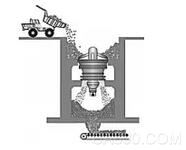
Figure 1-4-2
3.1.2 quarry stockpile
The crushed limestone is transported from the crusher by a stacker-reclaimer to the yard.
The ultrasonic level transducer monitors the surface profile of the stockpile, estimates the stock of limestone raw materials in the stockyard, and ensures inventory.
The ultrasonic level transducer is mounted on the belt head to monitor the distance from the discharge point to the top of the stack. When the distance between the two reaches the programmed set point, an alarm is triggered, a signal is sent, and the belt is raised or rotated to the new s position. Inventory management is a general application for ultrasonic level monitoring systems. The robust structure of the ultrasonic level transducer and the convenient remote controller monitoring can be said that the split ultrasonic level measurement system is an ideal technique for achieving level monitoring of the stack.
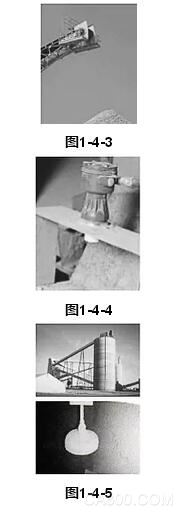
3.1.3 Secondary crusher
In this typical noise, damp and dirty environment, the ultrasonic level transducer detects the level in the buffer tank. The ultrasonic level system is also used to monitor the feed chute of the shredder's feed chute.
3.1.4 raw material mill feeding silo
The crushed ore is transferred from the secondary crusher to the feed silo. Feed level bins currently use radar level gauges to monitor ore levels in silos.
This application is a typical raw material inventory management. The radar level gauge monitors the level of material stored in the silo.
3.1.5 Raw material mill
The raw material mill is a typical rod mill that grinds raw materials (including additives) into fine powder and then transfers it to the kiln. The mixed raw meal is continuously fed into the raw material mill. The height of the roller of the radar level gauge on the roller path essentially monitors the depth of the roller path. The operator adjusts the feed rate based on the height of the roll to maintain a constant roll depth, improve the efficiency of the mill and prevent the roll from damaging the roll.
3.1.6 Kiln feeding silo
The crushed material is transferred from the raw material silo to the kiln feed silo (sometimes referred to as a continuous feed silo because the material is continuously fed into and out of the silo) where it is stored and preheated, ready for feeding In the kiln. The ultrasonic level gauge monitors the level in this bin, but due to the large dust and environmental impact, it has gradually been replaced by a radar level gauge in recent years. In recent years, many kiln feed silos have been equipped with Siemens SITRANS LR 560 radar level gauges, which have been able to overcome the harsh environment and have achieved great success. Ultrasound can also work, but depending on the degree of dust, it is an alternative to the low price of radar in the right place.
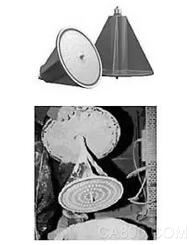
Figure 1-4-6
3.1.7 clinker silo
The material output in the heat kiln is called clinker. Size ranges from powder to fist-sized blocks, which are stored in the silo before being ground, as the material comes directly from the heat kiln and is very hot. The radar level gauge is very mature in the clinker bin level measurement.
3.1.8 Additive Bunker and Coal Bunker
These bins store material for addition to the raw mill process and mix with the crushed limestone before entering the kiln. They also store the material and add it during the final grinding of the clinker. These bins contain sand, iron ore, lime, gypsum, plaster, or other materials used to adjust the composition of the cement.
Coal storage exists in the coal burned in the kiln - the heat generated by the combustion contributes to chemical changes from the raw material to the clinker. The ultrasound system monitors the level in the silo for inventory.
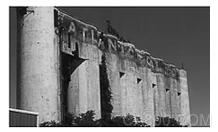
Figure 1-4-7
3.1.9 Finished Cement Warehouse
These silos store finished cement. Once the clinker and other additives are ground into a fine powder through a ball mill, they are sent to a storage bin waiting for shipment by truck, train, or further packaging into a bag of cement.
The finished cement is very fine and has a low water content, which makes it easy to fly. The performance of the ultrasonic level measurement system in this case is not very suitable. It depends on many factors, including bin height, dust collection system, transducer installation position, transducer sighting and feeding method. In such high-dust applications, radar level gauges such as Siemens' SITRANS LR460/560 can work reliably and stably.
3.2 Environmental Protection Industry
Environmental protection industry is the largest market for ultrasonic level meters. From the water/sewage system to the water purification system, ultrasonic sensors measure open channel flow, manipulate pumps, stimulate alarms, and control inventory of additives.
3.2.1 Collection System: Lift Station/Pump Station/Catch Well
In a municipal water treatment plant, an underground transport collection system transfers raw sewage from residential and industrial users to a sewage treatment plant. The pumping stations (also called pumping stations) cover all corners of the town. In the pump station, the sewage is collected in the collection wells and pumped from the collection wells to the sewage treatment plant.
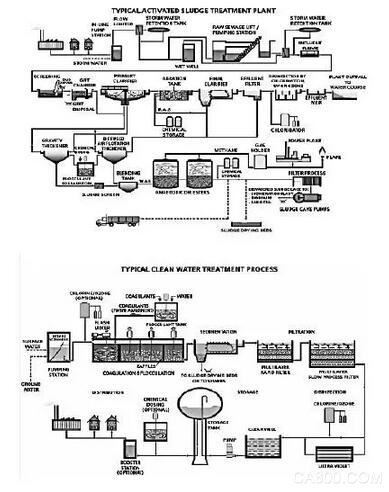
Figure 1-4-8
The ultrasonic level gauge monitors and controls the level of the sewage in the pump station. As you can see from the picture of the pump station in the picture, there are many obstacles in the well—the narrow beam angle and the non-contact nature of the ultrasonic wave make it an ideal technique for monitoring the level of a collection well.
Siemens' SITRANSLUT 400 ultrasound controllers specifically designed for the water/sewage industry combine advanced technology to provide more than simple pump control, monitoring pump run time, pump failure, pump start-up and cycle start-up. Wear the pump as an average, or preferentially wear out a pump.
The LUT 400 has unique timing features with additional advantages. The ON/OFF set point of the pump can be automatically changed according to the time of day, avoiding pumping during the peak tariff to save energy. The LUT 400 real-time clock control allows the setpoint to change according to the time of day. In a typical water-well installation, it can empty the well before the peak electricity price, and then postpone pumping until the expensive electricity price period elapses. In most cases, the punitive tariffs of power companies during peak periods can be avoided.
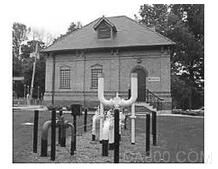
Figure 1-4-9
The LUT400 pump control and level measurement system provides the best solution to manage the sewerage network, use a level gauge to monitor pump status and pump volume, and digital inputs capture field and pump data to provide a complete, integrated system.
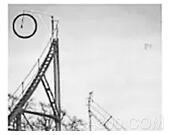
Figure 1-4-10
The pump station is designed to handle the flow generated by the residents it serves, but with time and population changes, the required processing capacity will change, it is difficult to predict in advance. The pumped volume provides real trend data for monitoring the efficiency of the collection system.
It is impossible to keep the pipeline completely sealed from the pump station to the sewage treatment plant, and groundwater infiltration is inevitable. Pumping volume monitoring can provide pipe network information to determine the location of leaks.
The monitored traffic data is transmitted remotely to the SCADA system, and the pipe network capacity can be effectively used, which allows efficient resource management and helps diagnose structural problems.
3.2.2 Rainwater pool
In some cases, overflows often occur, and stormwater pools are used to collect sewage and rainwater to prevent them from flowing into nearby rivers. Once heavy rain has weakened, water is pumped back to the collection system for processing. Ultrasonic level gauges are used to monitor the liquid level in these pools.
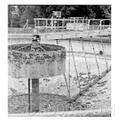
Figure 1-4-11
3.2.3 Main pump station of sewage treatment plant
The main pumping station is a central pumping station located in the sewage treatment plant – all remote pumping stations in the city eventually pump their sewage to the central station. The site is similar to a remote pump station, but the catchment wells are much larger and there are usually fewer obstacles in the well. The ultrasonic level gauge monitors the system and controls the pump to transfer the sewage into the treatment plant and maintain the timely treatment of the sewage in the treatment plant.
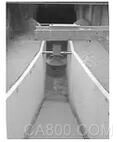
Figure 1-4-12
3.2.4 overflow, storm water tank
Overflow tanks located in sewage treatment plants provide the same function as stormwater basins. When the WWTPs are operating at maximum capacity, they collect mixed sewage and rainwater for storage purposes. Once the flow into the treatment plant is below the maximum capacity, overflowing water is pumped into the processing plant for processing.
3.2.5 Inlet Flow Path (Inflow Flow Cell)
The flow into the treatment plant needs to be monitored and controlled to maintain plant efficiency. If the incoming flow exceeds the rated capacity, it is stored in a stormwater tank (see above). Once the flow returns to normal, pumping water is returned to the intake port.
An open channel primary measuring device such as a flow cell or crucible, and a secondary measuring instrument SITRANS LUT 400 using ultrasonic technology are often used to provide high accuracy liquid level measurements to monitor the inflow.
Traffic data must be recorded in order to guarantee the following requirements:
The treatment plant works within the allowable range.
· The compliance report for on-site environmental regulations is accurate.
3.2.6 Barriers
The louver is installed in the water inlet channel of the sewage treatment plant and is used to block waste such as inorganic waste. Waste accumulated on the upstream side will cause the downstream water level to decrease. When enough garbage has accumulated, start a dice and remove garbage from the grill to keep the water flowing. The garbage is water-soaked and dried before cleaning.
Siemens HydroRanger 200 uses two transducers installed on both sides of the grill to measure the water level upstream and downstream of the grille. When the liquid level difference reaches the user set value, the relay of the HydroRanger 200 operates the dice to remove rubbish.
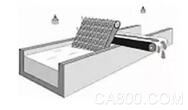
Figure 1-4-13
3.2.7 Solid Level Measurement
Waste and sand removed by the rake and sedimentation tank are collected in a container (or trash bin) monitored with a ultrasonic level gauge. Once full, the ultrasonic level gauge provides an alarm to the user and can be replaced with an empty bucket.

Figure 1-4-14
3.2.8 Chemical Tank
Chemicals such as chlorine used in clarifiers or chlorine that is disinfected before final discharge are stored on site for daily use. Ultrasonic level gauges monitor the levels in these tanks for inventory management purposes.

Figure 1-4-15
3.2.9 Final effluent / discharge flow
When all treatment plants discharge to the surrounding environment, they must meet local regulations in terms of quantity and quality, so accuracy at this stage is important. A meter, such as a crucible or a gutter, flows through them and gives high accuracy measurements, so it is often used. The quality of the emissions must be monitored, typically using sampling methods.
In order to accurately measure the flow, an open channel flow monitor combined with a measurement instrument and LUT 400 can be used. The LUT 400 uses a known head-to-flow relationship, or British and ISO standards, to convert high-accuracy ultrasonic level measurements to flow values. All data logging functions are used to record daily flow totalizers and flow rates.
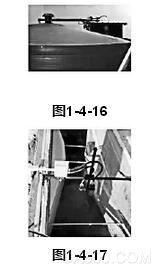
3.2.10 Sludge treatment
Sludge is toxic waste that settles out after water is pumped away and must be handled carefully. Its handling is highly regulated and all processes are carefully checked. Therefore inventory measurement plays an important role in sludge management. Ultrasonic and radar level meters are available.
3.2.11 Biogas
Biogas (methane) produced in the digester is usually stored in a floating gas cabinet. These gases are used to heat the treatment plant or generate power from the captive power plant. The ultrasound system is used to monitor the height of the floating roof of the gas cabinet, that is, the gas storage capacity.
3.2.12 digester level
In this application, ultrasound is used to measure the liquid level. As methane affects the speed of sound, accuracy will be affected. At present, radar level gauges can provide more accurate and lower-cost measurements, and in this case become the preferred technology to replace ultrasonic technology.
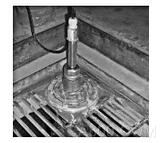
Figure 1-4-18
3.2.13 Dehydration, vacuum filter
Ultrasonic waves are used to monitor the level of sludge in the vacuum filter. When the level is too low, the pump is controlled to pump more sludge into the filter from the sludge tank.
3.3 Petrochemicals, Chemicals
The petrochemical, chemical and other industries mainly use liquid media, and a few are solid media. Applications are reaction tanks (towers), raw material storage tanks, and finished product storage tanks. As well as the pre-treatment of sewage before entering municipal sewage pipes.
Reaction tanks, such as high-temperature, high-pressure conditions, the level of application of the instrument type: radar level gauge, guided wave radar level gauge, electric buoy level gauge, magnetic flap level gauge, capacitance level gauge and so on.
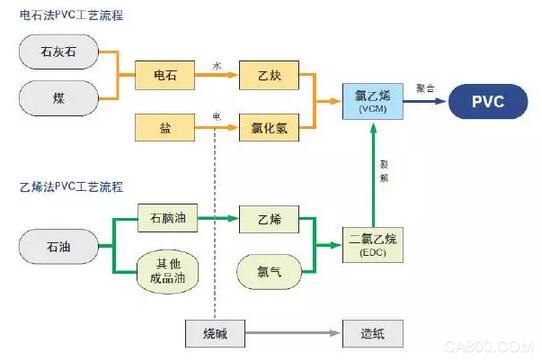
Figure 1-4-19
A typical liquid storage tank is a container for storing liquid chemicals, acids, alkalis, and the like. The tank is about 10m high. Or horizontal tank, about 3~4m. Commonly used level gauges are: non-contact radar, ultrasonic level gauges, contact type capacitors, magnetostrictive level gauges.
The solid bunker is distinguished from gas and liquid storage containers and stores solid loose particles. In the natural state, it will form different stacking forms and be conveyed pneumatically. The material has a certain angle of repose. The silo for storage of solid materials such as plastic particles or powders is usually tall and narrow, with a height of 30 m or more. Some of the bottoms are conical hoppers, which may increase the support structure and increase the measurement difficulty. Commonly used measuring instruments are: non-contact microwave level meters, heavy hammers, etc. The preferred level gauge is a high frequency microwave level gauge. Siemens' SITRANS LR560 Radar Level Meter uses 78GHz high frequency, narrow beam angles, and comes standard with gas purge and angle modulators that can be successfully used in this application.
In the salt chemical industry, contact and non-contact measurement, level gauges and solid level gauges are used, for example polyvinyl chloride (PVC) projects.
At present, due to the resource characteristics of the country, calcium carbide process PVC technology is mainly used. Level meters are used centrally in certain sections, as follows:
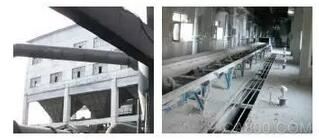
Figure 1-4-20
3.3.1 raw material warehouse
Limestone and coke as raw materials for calcium carbide production are the source of process production. Limestone and coke that meet the requirements of calcium carbide production process are broken and conveyed to the raw material warehouse. The raw material ore is transferred to the calcium carbide furnace through the chain bucket conveyor for the next reaction. Measuring the characteristics of dust and ore particles in the environment, solid radar level gauges can monitor the silo level in real time and accurately.

Figure 1-4-21
3.3.2 Carbide furnace
When the batching system automatically completes the weighing and proportioning of raw materials and ore raw materials, the burden is conveyed from the chain bucket conveyor to the quick lower hopper of the calcium carbide furnace, and is fed into the calcium carbide furnace through the furnace tube to react to generate acetylene and electrolysis. The resulting chlorine reaction eventually generates VCM.
From a thermodynamic point of view, depending on the arrangement of the electrode position and the position of the carbon monoxide extraction equipment, currently domestic calcium carbide furnaces generally use a circular furnace, and a number of rapid material feeding ports are distributed around the furnace. Due to safety and stability considerations, solid radar level gauges can meet field application requirements. Siemens SITRANS LR260, targeted intrinsic safety and flameproof design, small speaker design, easy installation; narrow beam angle, effectively avoid obstacles such as installation support; professional dust cover, ensure long-term, stable operation.
3.3.3 Caustic soda device
As a supporting section of the PVC project, the caustic soda plant produces various types of acid and alkali solutions such as hydrochloric acid and NaOH, which require strict monitoring of the material level. This process requires a higher level of sealing, corrosion protection, and signal stability for the level gauge.西门åLR250PTFE全塑å°å¤©çº¿ï¼ŒK波段高频液ä½é›·è¾¾ï¼Œæ•´ä½“胶å°è®¾è®¡ï¼Œé…åˆæœ€å…ˆè¿›çš„过程信å·å¤„ç†æŠ€æœ¯ï¼Œæœ‰æ•ˆè§£å†³æµ‹é‡éš¾é¢˜ã€‚

图1-4-22

图1-4-23
3.3.4 VCM(氯乙烯)
氯乙烯å•ä½“是PVC工艺的产å“,通常å˜æ”¾äºŽå¤§åž‹çƒç½ä¸ï¼Œç”±äºŽVCM易挥å‘,有毒,介电常数较低,且需è¦ç²¾ç¡®æŽ§åˆ¶çƒç½å†…液ä½ï¼Œ SITRANS LG2xx导波雷达系列作为高精度的接触å¼é›·è¾¾æ¶²ä½è®¡ï¼Œè€æžç«¯æ¸©åº¦å’ŒåŽ‹åŠ›ï¼Œå¾ˆå¥½åœ°æ»¡è¶³çŽ°åœºè¦æ±‚。
3.4 å‘电
燃煤å‘电厂主è¦çš„应用场åˆä¸ºï¼›åŽŸç…¤ã€ç²‰ç…¤åŠé£žç°ã€‚原煤仓应用较æˆç†Ÿï¼Œé›·è¾¾ã€è¶…声物ä½è®¡éƒ½å¯åº”用。30米以上大é‡ç¨‹æ–™ä»“,雷达物ä½è®¡ä¸ºé¦–é€‰ï¼Œå…¶ä»·æ ¼ä¹Ÿæœ‰ä¼˜åŠ¿ã€‚é£žç°æ˜¯ç…¤ç‡ƒçƒ§åŽçš„残留物,被回收和处ç†ï¼Œç”¨ä½œç¡…é…¸ç›æ°´æ³¥çš„填充物。é™ç”µé™¤å°˜çš„å°ç°æ–—ä¸ç”¨é«˜æ¸©é™ç”µç‰©ä½å¼€å…³ä½œä¸ºé«˜ä½æŽ§åˆ¶ï¼Œåœ¨ç°æ–—储满åŽï¼Œæ°”动é€åˆ°å¤§ç°åº“ä¸ã€‚
3.4.1 ç°åº“
ç°åº“的工况较å¤æ‚:
·仓高å¯è¾¾49 m。
·从顶部气动输é€è¿›æ–™ã€‚
·从底部充气,以å…æ¿ç»“。
气动é€æ–™äº§ç”Ÿå·¨å¤§æ¼©æ¶¡ç²‰å°˜ï¼ŒåŠ 上飞ç°ä»‹ç”µå¸¸æ•°è¾ƒä½Žï¼Œä½¿å‡†ç¡®æµ‹é‡ç‰©ä½å˜å¾—困难。早期曾用超声波物ä½è®¡æ¥æµ‹é‡ï¼Œé™æ€æ—¶èƒ½å¯é 测é‡ï¼Œå¹æ°”时粉尘漩涡使超声波信å·è¡°å‡ï¼Œä¸èƒ½å¯é 测é‡ã€‚é›·è¾¾æ³¢ä¼ æ’ä¸å—粉尘影å“,但飞ç°ä½Žä»‹ç”µå¸¸æ•°ä½¿å射困难,故低频雷达波在料é¢ä¸Šåå°„ä¿¡å·å°ï¼Œå¤šå¹´æ¥ä¸€ç›´æ²¡æ‰¾åˆ°å¥½çš„解决方案。
西门åå…¬å¸æŽ¨å‡ºçš„SITRANS LR560高频雷达物ä½è®¡é‡‡ç”¨78GHz高频雷达波,波æŸè§’å°ï¼Œèƒ½é‡é›†ä¸ï¼Œåœ¨é£žç°æ–™é¢ä¸Šä¹Ÿèƒ½å¾—到良好å射,能å¯é 应用,æˆä¸ºé£žç°ã€æˆå“æ°´æ³¥ç‰ç»†ç²‰æ–™ä½çš„首选产å“。
3.4.2 原煤仓
大型燃煤电厂通过燃煤产生蒸汽æ¥å‘电,ä¿è¯ç…¤ä»“ä¸ç…¤çš„å˜å‚¨é‡ï¼Œå¯¹é¿å…ä¸æ–å‘电和扰乱供电是至关é‡è¦çš„。需è¦è¿žç»æµ‹é‡ç…¤ä»“ä¸æ–™ä½ï¼ŒåŒ…æ‹¬åŠ æ–™å’Œå¸æ–™æ—¶ã€‚没有连ç»çš„æ–™ä½æ•°æ®ï¼Œå¯¹è¾“煤管ç†æ˜¯å›°éš¾çš„。
å·¥å†µï¼šç…¤ä»“ç”¨è¾“ç…¤çš®å¸¦æˆ–åŠ æ–™è½¦åŠ æ–™ï¼Œæ²¿è½¨é“移动,分å‘煤进入æ¯ä¸ªç…¤ä»“。当æŸä¸ªç…¤ä»“åŠ æ»¡æ—¶ï¼Œè‡ªåŠ¨ç§»åˆ°è¾ƒç©ºçš„æ–™ä»“ç»§ç»åŠ 料。
多年æ¥ï¼Œè¶…声波物ä½è®¡æˆåŠŸåœ°åº”用于原煤仓料ä½æµ‹é‡ã€‚超声波探头有自清æ´åŠŸèƒ½ï¼Œæ¯æ¬¡å‘射时的机械振动使ç°å°˜éš¾ä»¥åœ¨æ¢èƒ½å™¨ä¸Šç§¯èšï¼Œå¯å…维护。雷达技术的å‘展使在30米以上的料ä½æµ‹é‡æ—¶ï¼Œé›·è¾¾æ³¢çš„ä»·æ ¼æ›´ä½Žï¼Œå®ƒä¸åƒè¶…声波物ä½è®¡é‚£æ ·ï¼Œéšé‡ç¨‹å¢žåŠ ï¼Œä»·æ ¼å¢žå¹…è¾ƒå¤§ã€‚æ•…åœ¨ç…¤ä»“ç‰å›ºæ€æ–™ä½æµ‹é‡æ—¶ï¼Œåœ¨15~20m以下时,超声波是首选;在30måŠä»¥ä¸Šæ—¶ï¼Œé›·è¾¾ç‰©ä½è®¡æ˜¯é¦–选。但éšç€é›·è¾¾ç‰©ä½è®¡çš„性价比越æ¥è¶Šé«˜ï¼Œä¸ºäº†é¿å…粉尘影å“,固æ€æ–™ä½çš„测é‡å¯èƒ½ä¹Ÿå…¨éƒ¨é‡‡ç”¨é›·è¾¾ç‰©ä½è®¡ï¼Œä¾‹å¦‚西门åSITRANS LR560,å¯ä»¥æ»¡è¶³100m范围内的全é‡ç¨‹åº”用。
煤仓高料ä½æŽ§åˆ¶é€šå¸¸ç”¨å°„频电容物ä½å¼€å…³æˆ–阻旋物ä½å¼€å…³ã€‚åœ¨ç…¤åŠ åˆ°è®¾å®šçš„é«˜ä½ç‚¹æ—¶ï¼ŒæŽ§åˆ¶åŠ æ–™è½¦ç§»åŠ¨åˆ°å…¶ä»–æ–™ä»“åŠ æ–™ã€‚åœ¨è½ç…¤ç®¡å µç…¤æŠ¥è¦æŽ§åˆ¶é€šå¸¸ä¹Ÿç”¨å°„频电容或阻旋物ä½å¼€å…³ã€‚当è½ç…¤ç®¡å µå¡žæ—¶ï¼ŒæŠ¥è¦å¼€å…³ç»™æŽ§åˆ¶ä¿¡å·ï¼Œåœæ¢è¿›ç…¤ã€‚
煤仓料ä½çš„è¿žç»æµ‹é‡å’Œé«˜ä½æŽ§åˆ¶ä½¿ç…¤ä»“åŠ æ–™è‡ªåŠ¨åŒ–ï¼Œç…¤çš„å¤„ç†æ›´ç²¾ç¡®ï¼Œæ›´æœ‰æ•ˆï¼Œæ高了料仓的储å˜èƒ½åŠ›ã€‚æ“作人员å¯ä»¥é€è¿‡ç²‰å°˜è§‚察煤的真实料ä½ï¼Œä¿è¯æ–™ä»“ä¸å§‹ç»ˆæœ‰è¶³å¤Ÿçš„煤供锅炉燃烧。
3.5 油气
高质é‡çš„油气钻井设备的控制和信æ¯ç³»ç»Ÿçš„客户需è¦ä¸€ç§æŠ€æœ¯æ¥ç›‘è§†é’»äº•æ³¥æµ†æ± å’Œç½å†…的液ä½ã€‚钻井泥浆是钻井时的é‡è¦å› ç´ ï¼Œç²¾ç¡®æµ‹é‡é’»æŽ¢è®¾å¤‡ä¸çš„钻井液体循环系统ä¸çš„总的泥浆体积,对安全和工作效率是éžå¸¸é‡è¦çš„。很多ç§æŠ€æœ¯åŒ…括机械浮å都ä¸æˆåŠŸã€‚
钻井æµä½“或“泥浆â€è¢«æ³µå…¥é’»æŽ¢ç®¡ä¸ï¼Œåœ¨é‚£é‡Œç©¿è¿‡æŽ¥ç®¡å†·å´é’»å¤´ï¼Œç„¶åŽæ³¥æµ†æ²¿æ´žä¸Šå‡å›žæµåˆ°åœ°é¢ï¼Œæ³¥æµ†å’Œå½¢æˆçš„钻屑一起清扫钻的洞ã€æ³¥æµ†æ¶¦æ»‘é’»æ†å’Œå†·å´é’»å¤´ã€‚泥浆柱的é‡é‡é˜²æ¢æ¶²ä½“进入钻井å”,防æ¢â€œå–·å‡ºâ€ã€‚通过液体é™åŽ‹åŠ›ï¼Œå®ƒä¹Ÿæœ‰åŠ©äºŽé˜²æ¢å塌。液é¢å¢žåŠ 表示汽ã€æ²¹æˆ–者其他æµä½“进入钻井å”。如果钻井液é¢å‡å°‘,循环ä¸èƒ½è¿›è¡Œï¼Œå¦‚æžœä¸åŠ 以抑制,任何一ç§æƒ…况都能导致喷å‘。
3.5.1 æ¡ä»¶
泥浆ç½é€šå¸¸æ˜¯æ–¹å½¢æˆ–者矩形的互相è”通的钢ç½ï¼Œä½¿ç”¨äºŽæµ·ä¸ŠçŸ³æ²¹é’»äº•ã€æ”¶çº³å¤§é‡é’»äº•æ³¥æµ†ã€æµå…¥é’»äº•å¾ªçŽ¯ç³»ç»Ÿã€‚
在陆上钻井,这些ç½è¢«ç§°ä¸ºæ³¥æµ†æ± ,在地é¢ä¸ŠæŒ–ä¸€ä¸ªæ± ä»¥å®¹çº³é’»äº•æ³¥æµ†ã€‚
3.5.2 解决方案
西门åå…¬å¸ä¸€ä½“化超声波液ä½è®¡SITRANS ProbeLU,éžæŽ¥è§¦çš„超声技术,既ä¸å¯¹ç‰©æ–™æ±¡æŸ“,åˆæ²¡æœ‰æ˜“磨æŸçš„移动部件,å…维护。SITRANS Probe LU 先进的回波处ç†ä¸ç†ç¬è¿åŠ¨çš„æ…拌翼上的å射,é”定在被测液ä½ä¸Šè€Œä¸æ˜¯éšœç¢ç‰©ä¸Šï¼›é‡‡ç”¨2å‹NPT的螺纹连接,安装简å•ã€‚æ— è®ºå®¹å™¨å†…æœ‰æ— ä»‹è´¨ï¼Œéƒ½å¯ä»¥å®‰è£…å’Œæ ¡å‡†ã€‚ä¸€å°æ ‡å‡†åž‹å·æ¶²ä½è®¡é€‚用于多个容器;é‡ç¨‹ä»Žä½Žè‡³30cm至高至5m以上(由于防爆场åˆè¦æ±‚,需è¦é€‰ç”¨æœ¬å®‰å…¨è®¤è¯äº§å“)。
3.5.3 优点
å¯é çš„éžæŽ¥è§¦æ¶²ä½æµ‹é‡ï¼Œé¿å…了电å机械装置有的磨æŸå’Œæ–裂,å‡å°‘了维护和更æ¢æˆæœ¬ï¼Œå®žè´¨ä¸ŠèŠ‚çœäº†æ”¯å‡ºï¼Œå› 为æ供了é‡è¦çš„钻井å‚数的监视,安全性和钻井效率都得以显著æ高。
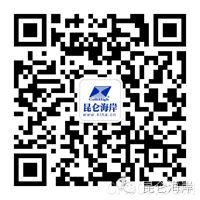
Outdoor Small Energy Storage System
Portable power supply humanized output port design: AC dual output port 220V output, to solve multi-channel power demand; DC 24V, 12V cigarette lighter, dual 5V USB output, more widely used. Can meet the needs of most electrical appliances, such as energy storage system for LED Light,energy storage system for outdoor, energy storage system for medical equipment,mobile phones, telephones, digital cameras, mobile hard drives, digital cameras, tablets, laptops, car starters, pumps, postal and telecommunications, environmental instruments Etc; can also be used in the following areas such as: finance, first aid, excavation, exploration, military, science, media, tourism, disaster relief, medical assistance, environmental protection and areas with widespread power shortages.
Solar Storage Battery,Small Solar System,Energy Storage System For Computer,Energy Storage System For Power Tools,Portable Small Electric Station,Multifunctional Lithium Generator
Shenzhen Enershare Technology Co.,Ltd , https://www.enersharepower.com